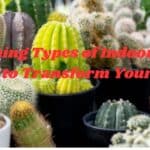Crafting the Perfect Indoor Soil Mix for Happy, Healthy Plants
Choosing the right soil mix for indoor plants can be a game-changer, especially if you’re aiming to create a lush indoor garden. Indoor plants need a soil mix that drains well, provides the right nutrients, and holds enough moisture without becoming compacted or waterlogged. Whether you’re a seasoned plant lover or just starting your green journey, understanding what goes into a quality indoor soil mix can make all the difference.
Let’s dive into what makes the ideal indoor soil mix, plus tips for customising it to meet your plants’ needs!
Table of Contents
Why a Good Indoor Soil Mix Matters
The soil mix you choose affects how well your plants absorb water, nutrients, and oxygen—all of which are essential for growth. Outdoor garden soil isn’t recommended for indoor plants since it can be too dense and often brings in pests. A well-crafted indoor soil mix is designed to give your plants the right balance of nutrients, drainage, and aeration.
Key Ingredients for an Indoor Soil Mix
- Potting Soil or Coco Coir
- Purpose: Acts as the main base, holding moisture and supporting the plant’s roots.
- Details: Potting soil is a go-to choice for many, but coco coir—a byproduct of coconut husks—is an eco-friendly alternative. Coco coir is lightweight, retains moisture well, and resists compaction, making it ideal for potted plants.
- Perlite or Pumice
- Purpose: Improves drainage and prevents soil from compacting.
- Details: Perlite is a lightweight volcanic rock that aerates soil and helps water drain effectively. If you’re looking to add extra drainage, pumice can also be used and works similarly. This is especially beneficial for plants that hate soggy roots, like succulents.
- Compost or Worm Castings
- Purpose: Adds nutrients that encourage growth.
- Details: Compost or worm castings give your indoor plants essential nutrients. Both break down over time, releasing minerals and beneficial microbes into the soil. Worm castings also help retain moisture and reduce soil-borne diseases, which can be especially helpful for indoor plants.
- Activated Charcoal
- Purpose: Helps prevent odor and mold, especially in closed indoor environments.
- Details: Activated charcoal absorbs excess moisture and impurities. If your plant’s container doesn’t have drainage holes, adding a small layer of activated charcoal to the bottom can help keep the soil fresh and healthy.
- Sand (Optional)
- Purpose: Adds extra drainage for plants that prefer drier soil, like cacti and succulents.
- Details: Adding sand creates a gritty soil mix, perfect for plants that need to dry out between waterings. If you’re growing tropical or humidity-loving plants, you might skip this ingredient.
Indoor Soil Mix Recipe for Different Plant Types
Different plants need different types of soil, so here’s a quick guide to customizing your mix:
- General Houseplants
- Recipe: 2 parts potting soil, 1 part perlite, 1 part compost or worm castings.
- Tip: This balanced mix works for many indoor plants, including ferns, pothos, and philodendrons.
- Succulents and Cacti
- Recipe: 2 parts potting soil, 1 part sand, 1 part perlite or pumice.
- Tip: These plants prefer drier, well-draining soil. Add a bit of sand to help excess water escape quickly.
- Orchids
- Recipe: 1 part pine bark, 1 part perlite, 1 part charcoal.
- Tip: Orchids don’t grow in typical soil and need a mix that allows their roots to breathe and drain fully. Look for orchid bark for the best results.
- Tropical Plants
- Recipe: 3 parts coco coir or potting soil, 1 part perlite, 1 part compost or worm castings.
- Tip: Tropical plants like moisture, so use coco coir for a bit of added water retention. Adding activated charcoal also helps keep the soil fresh in humid environments.
Personal Tips for Mixing Indoor Soil
When I first started keeping plants indoors, I didn’t realize how much soil quality mattered. I used to think any soil would work, but my plants taught me otherwise! I quickly noticed that the right mix helped my plants thrive. My peace lily, for instance, loves a mix with plenty of moisture-retentive coco coir, while my succulent collection is happiest in a gritty, fast-draining mix.
One quick tip: always make sure to mix your ingredients well to get a consistent blend. I use a large bowl to mix my soil batches, adding each ingredient in small layers so that each part is spread out evenly.
Essential Tips for Maintaining Indoor Soil Health
- Repot Every Year or Two: Indoor soil can become compacted and lose its nutrients over time. Repot your plants with fresh soil every one to two years to keep them happy and healthy.
- Use Water Wisely: Tap water can contain minerals that build up in indoor soil, especially in plants like succulents. Consider using filtered or distilled water to avoid mineral buildup, or flush your soil every couple of months.
- Avoid Fertilizer Overload: Many soil mixes come pre-enriched with nutrients, so additional fertilizer may not be necessary for the first few months. When you do add fertilizer, start small to avoid overwhelming your plants.
Creating a Vertical Garden with the Right Soil Mix
Vertical gardens are a fantastic way to bring greenery into small spaces, and using the right soil mix is essential for success. Choose plants that have similar soil needs and ensure your soil mix provides the right balance of drainage and moisture retention. Vertical setups can dry out faster, so consider using coco coir or adding some water-absorbing crystals if you’re growing tropical plants that need consistent moisture.
Final Thoughts
Creating the perfect indoor soil mix takes a bit of effort, but the results are worth it. Tailoring your soil to each plant’s needs helps ensure your indoor garden thrives. With a little bit of care and the right ingredients, you’ll be amazed at how vibrant and healthy your plants can become.
So, whether you’re crafting a cosy corner for your peace lilies or building a sunny spot for succulents, the right soil mix will make all the difference in helping your plants thrive.










